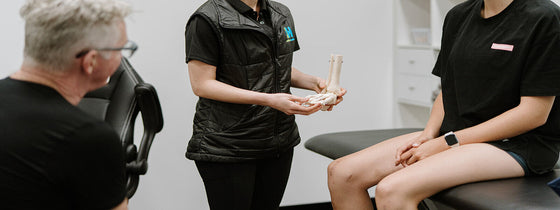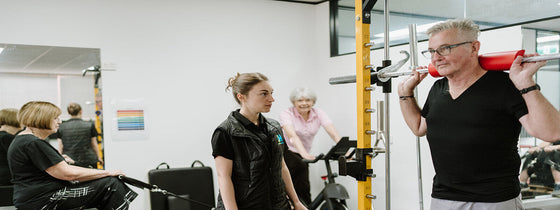Why are Physiotherapists and Podiatrists obsessed with jumping and landing mechanics? Simple: its how best to avoid ACL ruptures and sprained ankles!
‘It’s not the falling the kills you, it’s the landing.’
Just think about (or literally count) how many times in a game of football, netball, soccer, lacrosse, basketball and/or during a dancing class that you jump off the ground and then land again. It can be hundreds of times!
Sometimes you land on one foot or two feet, and sometimes you get knocked off your trajectory of landing by an external or internal factor. Examples could be getting a knock whilst landing after a mark, standing on someone’s foot and/or recognising you need to change directions quickly. Furthermore, surfaces could be altered in the landing phase, there might be a ball you’re chasing/ focused on and/or you could be in shoes you aren’t accustomed to. All these factors can create a situation in which you do not land as you had planned as you began to jump.
Landing poorly is a method of spraining ankles, rupturing ACLs and/or creating unaccustomed load in structures in your lower limb like your collateral knee ligaments (MCL and LCL) and some smaller bones in your feet. So, by now you can see that landing poorly from a jump or hop is an easy way of becoming injured (and potentially injured in season ending ways).
Clients of the Optimal Health Lab know that our Physiotherapy and Podiatry team commonly asked you to single leg squat and hop during the assessment of any lower limb injury consultation or musculoskeletal screening session or pre-pointe assessment. What we are trying to assess is whether in a very controlled situation, with minimal external influences, can our clients jump and land safely.
As you jump and land in our rooms we are looking at factors like…
Without you even knowing most sports include jumping and landing training as part of your weekly training sessions, and is a large part of our ACL Rehab Roadmap program. Mostly this is achieved through marking drills, agility drills and/or literally practicing jumping in certain directions +/- adding a sport specific skill. Programs have even been designed for coaches to easily integrate this into training, like the FIFA 11+ program. Achieving all the skills required for a successful return to sport is also discussed in a previous blog written by Scott.
Our take home message simply read… Please take the time to practice this integral sporting skill if you’d like to minimise your risk of a lower limb injury, namely an ACL rupture or sprained ankle this season. If you feel like you need your efficiency of jumping and landing assessed, please book a consultation with an OHL Physiotherapist or Podiatrist and we’ll get you sorted!

OHL is integrating a new athletic screening assessment into its practice to further enhance our community's sporting ability. This screening assessment combines range of motion, strength profiling, force deck analysis, and subjective training status to give athletes a comprehensive performance snapshot. By establishing a baseline and identifying key areas for improvement, we can tailor your training to enhance performance, provide insight on key metrics, and stay resilient throughout the season. Whether you're preparing for preseason, managing midseason demands, or simply aiming to train smarter, this assessment delivers the data-driven insights you need.

If you're experiencing back or neck pain with neurological signs and symptoms, a thorough neurological examination is crucial for accurate assessment and effective treatment. In this Optimal Tip learn more about what we mean by completing a neurological exam!

Squats, deadlifts, and calf raises are key movement patterns that should be part of every strength and conditioning program—regardless of age and activity level. These functional movements support joint health, improve posture and balance, and reduce the risk of injury while building strength where it matters most.